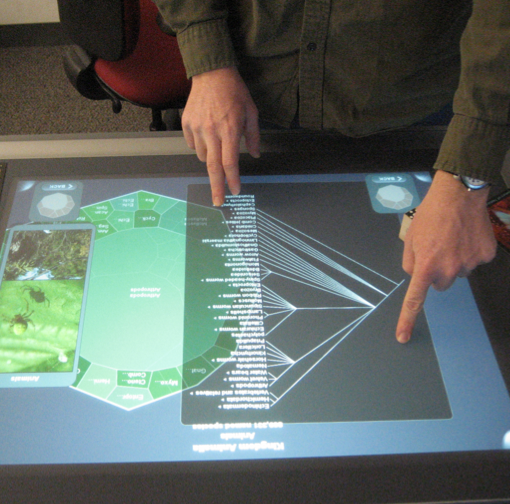
A UNL team is collaborating with Harvard University, the University of Michigan and other institutions to develop an innovative evolution exhibit for five U.S. museums, including the Nebraska State Museum.
"Life on Earth" is expected to be open to the public at the University of Nebraska State Museum (Morrill Hall) by 2012 as a permanent display. It will be integrated with the museum's educational programs for schools and the general public. Life on Earth will also be installed at the Harvard Museum of Natural History, California Academy of Sciences, Chicago's Field Museum of Natural History and Boston Children's Museum.
Judy Diamond, professor and curator of informal science education for the University of Nebraska State Museum, is a co-principal investigator along with Margaret Evans from the University of Michigan. Harvard University Science Discovery Room Lab director Chia Shen is leading the project. Life on Earth is funded by a new three-year, $2.3 million grant from the National Science Foundation. It is being developed by a team of computer scientists, evolutionary biologists, informal science education researchers and museums in partnership with the Encyclopedia of Life Learning and Education Group.
"Life on Earth" will be a multi-touch table-top evolution exhibit that provides hands-on, cooperative learning activities for museum visitors. The exhibit will use cutting-edge computing technology that allows users to explore the Tree of Life, common descent and natural selection. "Life on Earth" includes a substantial learning research component to better understand how to teach evolution to public audiences in age-appropriate ways.
"This project takes museums to a new level of innovation for how to teach the public about the fundamental principles of evolution that unify research in the life sciences," said Diamond.
Diamond began working with Harvard as part of her NSF-funded "Understanding the Tree of Life" project in 2008. Amy Spiegel, research associate professor in the UNL Center for Instructional Innovation and Ian Cottingham, software architect in UNL's Department of Computer Science and Engineering, will work with the University of Nebraska State Museum on the exhibit.
For more information about "Life on Earth," visit http://sdr.seas.harvard.edu/content/life-earth.